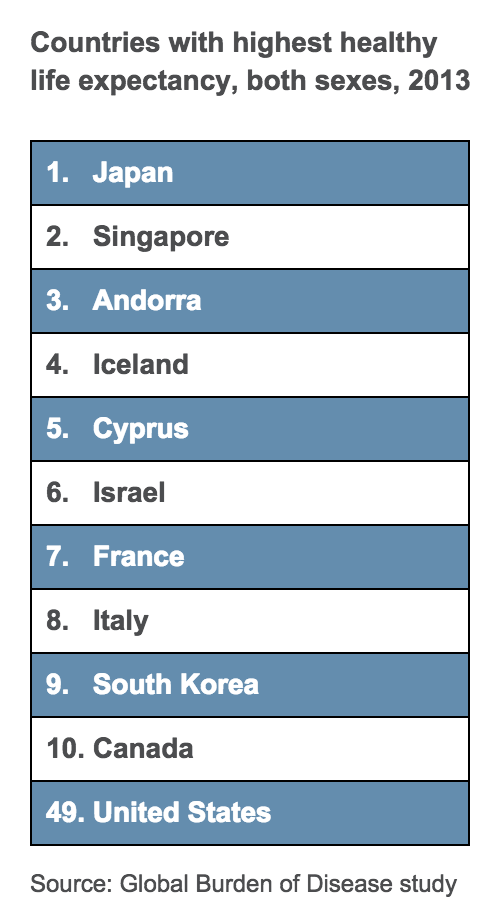
When it comes to healthy life expectancy, the United States ranks 49th out of 188 countries studied in a new analysis.
The Global Burden of Disease study analyzed all major diseases and injuries and found that people around the world are living longer, even in some of the poorest countries, but a complex mix of fatal and nonfatal ailments causes much health loss. See this article for a list of the top contributors to health loss in the United States.
 “The world has made great progress in health, but now the challenge is to invest in finding more effective ways of preventing or treating the major causes of illness and disability,” said Theo Vos, MD, PhD, of the Institute for Health Metrics and Evaluation at the University of Washington in Seattle. He was the lead author of the study, conducted by an international consortium of researchers.
“The world has made great progress in health, but now the challenge is to invest in finding more effective ways of preventing or treating the major causes of illness and disability,” said Theo Vos, MD, PhD, of the Institute for Health Metrics and Evaluation at the University of Washington in Seattle. He was the lead author of the study, conducted by an international consortium of researchers.
The researchers looked at the role that socio-demographic status—a combination of income, age, fertility and years of schooling—plays in determining health loss. They found that socio-demographic status accounts for more than 50% of the differences seen across countries and over time for certain leading causes of disability-adjusted life years, including maternal and neonatal disorders. Socio-demographic status is much less responsible for the variation seen for ailments such as heart disease and diabetes, however.
“Factors including income and education have an important impact on health but don’t tell the full story,” said Christopher Murray, MD, DPhil, director of the IHME. “Looking at healthy life expectancy and health loss at the country level can help guide policies to ensure that people everywhere can have long and healthy lives no matter where they live.”



